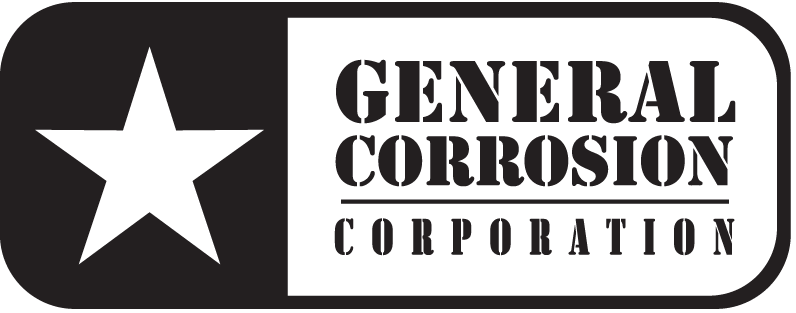About General Corrosion Corporation
 General Corrosion Corporation provides superior corrosion control services safely, ethically and economically. We are dedicated to providing only the highest quality cathodic protection design and installation. Cathodic protection is used to control external corrosion on buried or submerged metallic structures (pipelines, water lines, pipes, tank bottoms, buried tanks, well casings, cables, posts, anchors, etc.).
General Corrosion Corporation provides superior corrosion control services safely, ethically and economically. We are dedicated to providing only the highest quality cathodic protection design and installation. Cathodic protection is used to control external corrosion on buried or submerged metallic structures (pipelines, water lines, pipes, tank bottoms, buried tanks, well casings, cables, posts, anchors, etc.).
There are two common types of cathodic protection systems: Galvanic and Impressed Current
Galvanic cathodic protection systems are used primarily for well coated, electrically isolated structures where electrical current requirements are low.
Impressed current cathodic protection systems are used where electrical current requirements are higher, such for as poorly coated or bare metallic structures, and long lines. An external power supply and anode beds are used to deliver the required cathodic protection electrical current.
There are advantages and disadvantages to each type of cathodic protection system including construction costs, operating and maintenance costs, and possible influence on other buried metallic structures.
The ultimate goal with both cathodic protection systems is to control external corrosion and maintain a level of protection over the design life of the system being protected. Only high quality anodes and backfill materials should be used to result in low ground bed resistance, which results in greater efficiency, better distribution of protective electrical current, and prolongs anode life. The quality of the installation and construction procedures is also very important.
Anode wires should be terminated in an above ground test station or junction box to allow for proper testing. Mechanical connections must be made with use of high alloy materials. Welds must be proper and of high quality materials. Where cable splicing cannot be avoided, only high quality splicing materials that are engineered for the specific task and conditions must be used. External power supplies (rectifiers) must be sized properly to accommodate the electrical current requirements and to operate efficiently at the same time.
Related materials such as cable, conduit, connectors, reference electrodes, test stations and junction boxes must be of the highest quality and durability.
INDUSTRIES SERVED


You must be logged in to post a comment.